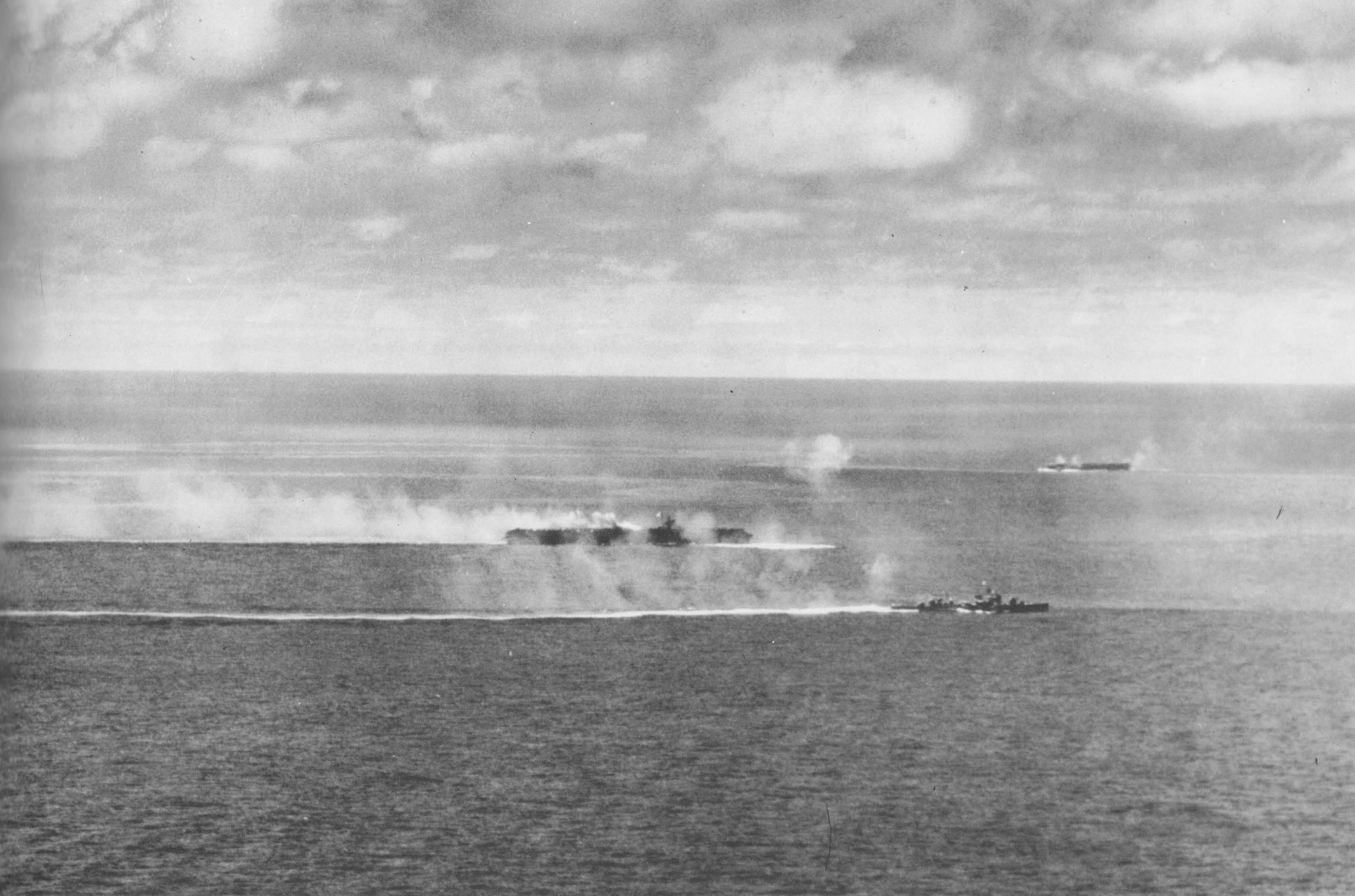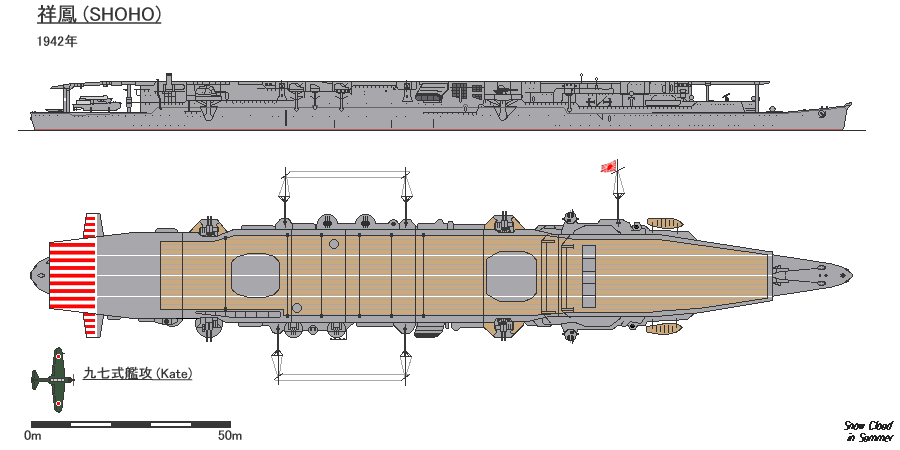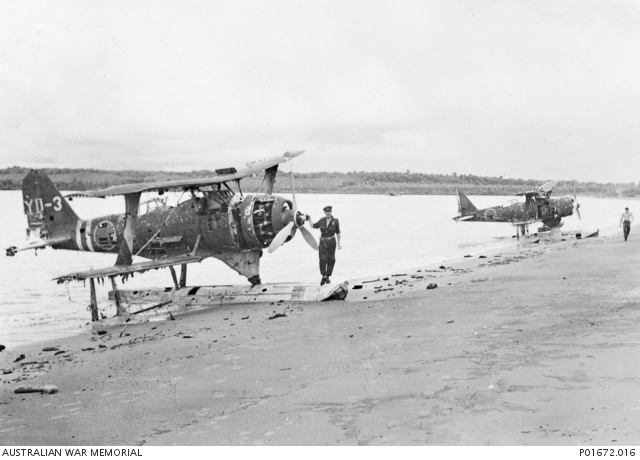|
Raids On Deboyne (1942)
A series of raids on Deboyne were conducted by Allied forces against the Imperial Japanese Navy seaplane base in the Deboyne Islands of the Louisiade Archipelago between 9–11 May 1942. The seaplane base had been set up prior to the Battle of Coral Sea and became untenable and was abandoned by the Japanese, due to proximity to Allied airfields at Port Moresby and the failure of '' Mo Sakusen'' (Operation ''Mo''). Deboyne atoll installations Deboyne is the name for both an island and the atoll of which it is a part. Deboyne Island is also known as Panniet Island. It is in the Louisiade Archipelago east of Papua New Guinea. During World War II, the Japanese built a temporary seaplane base in the lagoon at Deboyne Atoll as part of MO Sakusen, the attempt to capture Port Moresby, Papua. The base was created by units that came from Rabaul, New Britain and Shortland Island in the Solomon Islands, including the seaplane tender ''Kamikawa Maru''. The base existed for approximately five ... [...More Info...] [...Related Items...] OR: [Wikipedia] [Google] [Baidu] |
Imperial Japanese Navy
The Imperial Japanese Navy (IJN; Kyūjitai: Shinjitai: ' 'Navy of the Greater Japanese Empire', or ''Nippon Kaigun'', 'Japanese Navy') was the navy of the Empire of Japan from 1868 to 1945, when it was dissolved following Japan's surrender in World War II. The Japan Maritime Self-Defense Force (JMSDF) was formed between 1952–1954 after the dissolution of the IJN. The Imperial Japanese Navy was the third largest navy in the world by 1920, behind the Royal Navy and the United States Navy (USN). It was supported by the Imperial Japanese Navy Air Service for aircraft and airstrike operation from the fleet. It was the primary opponent of the Western Allies in the Pacific War. The origins of the Imperial Japanese Navy go back to early interactions with nations on the Asian continent, beginning in the early medieval period and reaching a peak of activity during the 16th and 17th centuries at a time of cultural exchange with European powers during the Age of Discovery. After t ... [...More Info...] [...Related Items...] OR: [Wikipedia] [Google] [Baidu] |
Nakajima E8N
The Nakajima E8N was a Japanese ship-borne, catapult-launched, reconnaissance seaplane of the Second Sino-Japanese War. It was a single-engine, two-seat biplane with a central main-float and underwing outriggers. During the Pacific War, it was known to the Allies by the reporting name "Dave". Design and development The E8N was developed as a replacement for the same company's E4N and was essentially an evolutionary development of the earlier reconnaissance seaplane, with revised wings of lesser area and taller tail surfaces. Seven prototypes were constructed, under the company designation MS, first flying in March 1934.Francillon 1970, p.408. These were duly engaged in comparative trials against competitors from Aichi and Kawanishi. Operational history The MS was ordered into production, designated Navy Type 95 Reconnaissance Seaplane Model 1 in October 1935.Francillon 1970, p.409. A total of 755 E8Ns were built by Nakajima and Kawanishi, production continuing until 1940.Franc ... [...More Info...] [...Related Items...] OR: [Wikipedia] [Google] [Baidu] |
Battles And Operations Of World War II Involving Papua New Guinea
A battle is an occurrence of combat in warfare between opposing military units of any number or size. A war usually consists of multiple battles. In general, a battle is a military engagement that is well defined in duration, area, and force commitment. An engagement with only limited commitment between the forces and without decisive results is sometimes called a skirmish. The word "battle" can also be used infrequently to refer to an entire operational campaign, although this usage greatly diverges from its conventional or customary meaning. Generally, the word "battle" is used for such campaigns if referring to a protracted combat encounter in which either one or both of the combatants had the same methods, resources, and strategic objectives throughout the encounter. Some prominent examples of this would be the Battle of the Atlantic, Battle of Britain, and Battle of Stalingrad, all in World War II. Wars and military campaigns are guided by military strategy, whereas ba ... [...More Info...] [...Related Items...] OR: [Wikipedia] [Google] [Baidu] |
1942 In Papua New Guinea
Year 194 ( CXCIV) was a common year starting on Tuesday (link will display the full calendar) of the Julian calendar. At the time, it was known as the Year of the Consulship of Septimius and Septimius (or, less frequently, year 947 '' Ab urbe condita''). The denomination 194 for this year has been used since the early medieval period, when the Anno Domini calendar era became the prevalent method in Europe for naming years. Events By place Roman Empire * Emperor Septimius Severus and Decimus Clodius Septimius Albinus Caesar become Roman Consuls. * Battle of Issus: Septimius Severus marches with his army (12 legions) to Cilicia, and defeats Pescennius Niger, Roman governor of Syria. Pescennius retreats to Antioch, and is executed by Severus' troops. * Septimius Severus besieges Byzantium (194–196); the city walls suffer extensive damage. Asia * Battle of Yan Province: Warlords Cao Cao and Lü Bu fight for control over Yan Province; the battle lasts for over 1 ... [...More Info...] [...Related Items...] OR: [Wikipedia] [Google] [Baidu] |
Conflicts In 1942
Conflict may refer to: Arts, entertainment, and media Films * ''Conflict'' (1921 film), an American silent film directed by Stuart Paton * ''Conflict'' (1936 film), an American boxing film starring John Wayne * ''Conflict'' (1937 film), a Swedish drama film directed by Per-Axel Branner * ''Conflict'' (1938 film), a French drama film directed by Léonide Moguy * ''Conflict'' (1945 film), an American suspense film starring Humphrey Bogart * ''Catholics: A Fable'' (1973 film), or ''The Conflict'', a film starring Martin Sheen * ''Judith'' (1966 film) or ''Conflict'', a film starring Sophia Loren * ''Samar'' (1999 film) or ''Conflict'', a 1999 Indian film by Shyam Benegal Games * ''Conflict'' (series), a 2002–2008 series of war games for the PS2, Xbox, and PC * ''Conflict'' (video game), a 1989 Nintendo Entertainment System war game * '' Conflict: Middle East Political Simulator'', a 1990 strategy computer game Literature and periodicals * ''Conflict'' (novel) ... [...More Info...] [...Related Items...] OR: [Wikipedia] [Google] [Baidu] |
South West Pacific Theatre Of World War II
The South West Pacific theatre, during World War II, was a major theatre of the war between the Allies and the Axis. It included the Philippines, the Dutch East Indies (except for Sumatra), Borneo, Australia and its mandate Territory of New Guinea (including the Bismarck Archipelago) and the western part of the Solomon Islands. This area was defined by the Allied powers' South West Pacific Area (SWPA) command. In the South West Pacific theatre, Japanese forces fought primarily against the forces of the United States and Australia. New Zealand, the Netherlands (mainly the Dutch East Indies), the Philippines, United Kingdom, and other Allied nations also contributed forces. The South Pacific became a major theatre of the war following the Japanese attack on Pearl Harbor in December 1941. Initially, US war plans called for a counteroffensive across the Central Pacific, but this was disrupted by the loss of battleships at Pearl Harbor. During the First South Pacific Campai ... [...More Info...] [...Related Items...] OR: [Wikipedia] [Google] [Baidu] |
Japanese Aircraft Carrier Zuikaku
''Zuikaku'' (Japanese: 瑞鶴 "Auspicious Crane") was the second and last built for the Imperial Japanese Navy (IJN) shortly before the beginning of the Pacific War. Her aircraft took part in the attack on Pearl Harbor that formally brought the United States into the war, and she fought in several of the most important naval battles of the war, before being sunk during the Battle of Leyte Gulf.Zuikaku @ www.history.navy.mil ''Zuikaku'' was one of six carriers to participate in the Pearl Harbor attack and was the last of the six to be sunk in the war ( Akagi, Kaga, ... [...More Info...] [...Related Items...] OR: [Wikipedia] [Google] [Baidu] |
Japanese Aircraft Carrier Shōhō
''Shōhō'' (Japanese: 祥鳳, "Auspicious Phoenix" or "Happy Phoenix") was a light aircraft carrier of the Imperial Japanese Navy. Originally built as the submarine support ship ''Tsurugizaki'' in the late 1930s, she was converted before the Pacific War into an aircraft carrier and renamed. Completed in early 1942, the ship supported the invasion forces in Operation MO, the invasion of Port Moresby, New Guinea, and was sunk by American carrier aircraft on her first combat operation during the Battle of the Coral Sea on 7 May. ''Shōhō'' was the first Japanese aircraft carrier to be sunk during World War II. Design, construction and conversion ''Shōhō'' and her sister were designed to be easily modified as an oil tanker, submarine tender, or aircraft carrier as needed. ''Shōhō'' was laid down by the Yokosuka Naval Arsenal on 3 December 1934 as the submarine tender ''Tsurugizaki''. She was launched on 1 June 1935 and completed on 15 January 1939. Not long after the ship w ... [...More Info...] [...Related Items...] OR: [Wikipedia] [Google] [Baidu] |
Lockheed Hudson
The Lockheed Hudson is a light bomber and coastal reconnaissance aircraft built by the American Lockheed Aircraft Corporation. It was initially put into service by the Royal Air Force shortly before the outbreak of the Second World War and primarily operated by it thereafter. The Hudson was a military conversion of the Model 14 Super Electra airliner, and was the first significant aircraft construction contract for Lockheed — the initial RAF order for 200 Hudsons far surpassed any previous order the company had received. The Hudson served throughout the war, mainly with Coastal Command but also in transport and training roles, as well as delivering agents into occupied France. It was also used extensively with the Royal Canadian Air Force's anti-submarine squadrons and by the Royal Australian Air Force. Design and development In late 1937 Lockheed sent a cutaway drawing of the Model 14 to various publications, showing the new aircraft as a civilian aircraft and converte ... [...More Info...] [...Related Items...] OR: [Wikipedia] [Google] [Baidu] |
Anti-aircraft Gun
Anti-aircraft warfare, counter-air or air defence forces is the battlespace response to aerial warfare, defined by NATO as "all measures designed to nullify or reduce the effectiveness of hostile air action".AAP-6 It includes surface based, subsurface ( submarine launched), and air-based weapon systems, associated sensor systems, command and control arrangements, and passive measures (e.g. barrage balloons). It may be used to protect naval, ground, and air forces in any location. However, for most countries, the main effort has tended to be homeland defence. NATO refers to airborne air defence as counter-air and naval air defence as anti-aircraft warfare. Missile defence is an extension of air defence, as are initiatives to adapt air defence to the task of intercepting any projectile in flight. In some countries, such as Britain and Germany during the Second World War, the Soviet Union, and modern NATO and the United States, ground-based air defence and air defence aircraf ... [...More Info...] [...Related Items...] OR: [Wikipedia] [Google] [Baidu] |
Mitsubishi F1M
The Mitsubishi F1M ( Allied reporting name "Pete") was a Japanese reconnaissance floatplane of World War II. It was the last biplane type of the Imperial Japanese Navy, with 944 built between 1936 and 1944. The Navy designation was "Type Zero Observation Seaplane" (零式水上観測機). Design and development In 1934, the Imperial Japanese Navy issued a specification to Mitsubishi, Aichi and Kawanishi for a replacement for its Nakajima E8N floatplanes, which were used for short-ranged reconnaissance and observation missions from the Navy's warships.Francillon 1970, p. 358. Mitsubishi's design, the Ka-17, given the short system designation F1M1 by the Japanese Navy, was a small all-metal biplane powered by a single Nakajima Hikari 1 radial engine rated at , the same engine as used by Aichi's competing F1A. It had elliptical wings and great care had been taken to reduce drag, with the number of interplane struts and bracing wires minimised. The first of four F1M1s flew in June 1 ... [...More Info...] [...Related Items...] OR: [Wikipedia] [Google] [Baidu] |
Deboyne Islands
The Deboyne Islands are an atoll, composed of a group of reefs and islands in the north of the Louisiade Archipelago, Papua New Guinea. Geography They are located from Misima and from the Torlesse Islands. Islands in the Deboyne Islands include Panaeati (the northernmost), Panapompom, Nivani, Pana Uya Wana, Rara, Losai, Nibub and Passage Island. History The Deboyne Islands were discovered in 1793 by Antoine Bruni d'Entrecasteaux. He named the islands after Pierre Étienne Bourgeois de Boynes, who was the Marine and Colonial Minister of France at that time. During World War II, the islands were used as a seaplane outpost by the Imperial Japanese Navy, from 5–12 May 1942. Population The settlements in the main island Panaeati are all located on the south coast of the island, facing the lagoon. the language spoken on the islands is Misima-Paneati language. Economy Nivani, the small island south of Panapompom, has a small vocational school and slipway. Yachts are regul ... [...More Info...] [...Related Items...] OR: [Wikipedia] [Google] [Baidu] |


_underway_off_Tulagi%2C_circa_7_August_1942.jpg)




